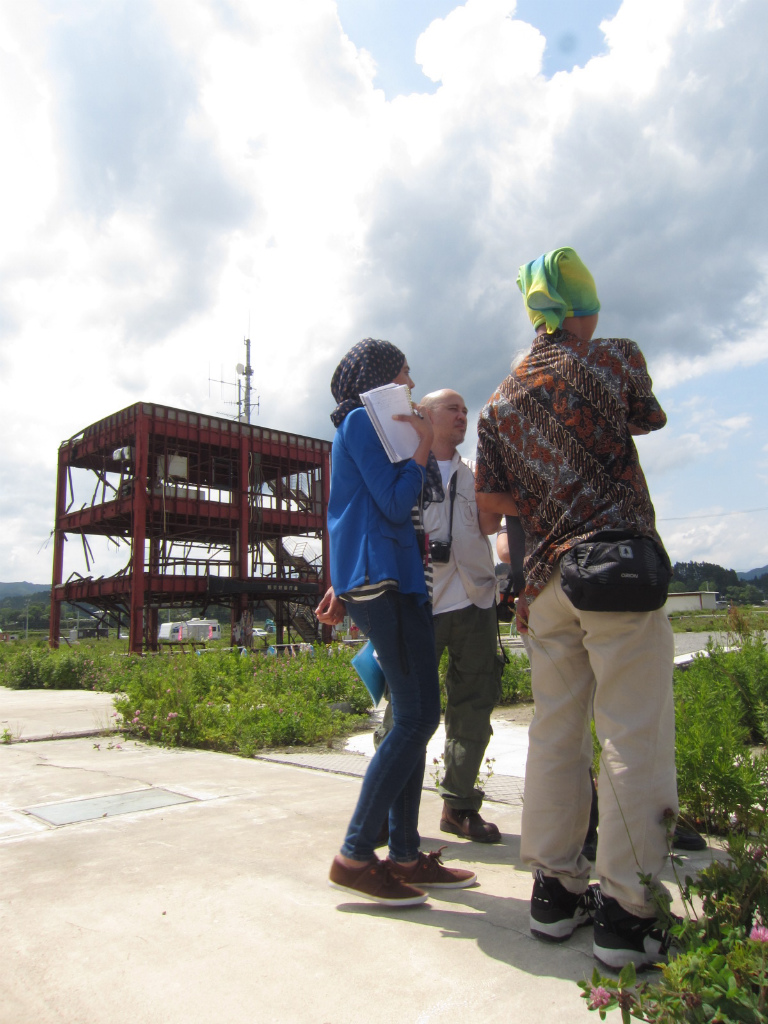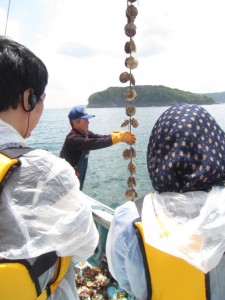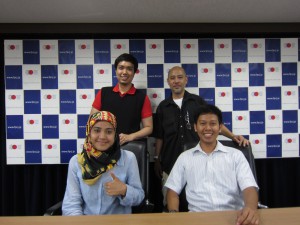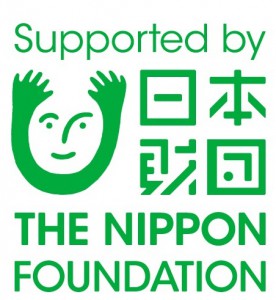Report: Fellowship Program for ASEAN Journalists
From June 15 to 25, 2014, ASEAN press participated in the “Recovery from the Great East Japan Earthquake – Sharing Tohoku’s Revitalization Using Marine Resources with Asia” program. The goal of this program was to help improve disaster prevention measures in other countries by inviting journalists from Asian countries at risk of coastal hazards, such as tsunamis, and have them report on the lessons learned from the Great East Japan Earthquake and revitalization efforts using marine resources. Four journalists participated, from Indonesia, Malaysia, the Philippines and Thailand, and researched stories in Tokyo and Tohoku for 11 days.
*This program was undertaken with support from the Nippon Foundation and the Toshiba International Foundation.
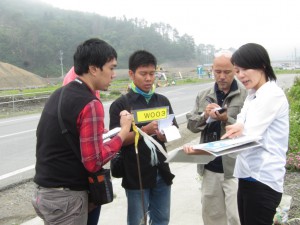
Themes and Participant Countries
With three years having passed since the Great East Japan Earthquake, restoration efforts in affected areas are proceeding in earnest. The experience of and lessons learned from this earthquake are being used to develop disaster response measures not just in Tohoku, but throughout Japan. There are many other countries throughout the world facing the risk of tsunamis and storm surges, or engaged in disaster recovery. This includes the ASEAN countries, with their territory bounded by the sea making them susceptible to natural disasters. These ASEAN countries are also geographically close to Japan and important partners of Japan, but news outlets in the majority of them do not have Japanese bureaus. This means that their opportunities to report directly on the disaster and on lessons learned from it have been extremely limited. Considering this situation, this program invited journalists from news outlets in Indonesia, Malaysia, the Philippines and Thailand to Japan.
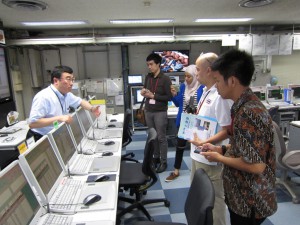
Locations
Of the 11 days of the program the journalists spent half their time in Tokyo covering topics such as the tsunami warning system of the Japan Meteorological Agency and the storm surge control measures of the Tokyo Metropolitan Government. The rest of the time was spent going from Miyako, Iwate to Iwanuma, Miyagi along the Pacific coast of Tohoku, which was heavily damaged by the tsunami. The journalists interviewed local residents and government officials, visiting affected areas and learning about building cities resistant to disasters, disaster prevention education, and sustainable fishing.
The areas visited are shown on the map here.
There are also many pictures posted on the FPCJ Facebook page.
Participant Reactions
Throughout the program, the participants kept in mind that they were sharing the experiences of the Great East Japan Earthquake in order to help prepare for disasters in their own country.
The journalists showed the most interest in the activities of two NPOs, Mori wa Umi no Koibito (Mori-Umi) and the Great Forest Wall Project.Mori-Umi is a group located in Kesennuma, Miyagi working on environmental conservation. Having realized that it is necessary to protect forests in order to protect the sea, they are involved in reforestation and teaching children about the environment. The Great Wall Forest Project is a project currently underway to plant trees in a mixture of soil and debris from the earthquake in order to make a forest that acts as a natural tide embankment. The journalists visited a site in Iwanuma City, Miyagi where trees were being planted. The concepts of “protecting the forest to protect the sea” and “protecting lives with the power of nature” were both novel despite their simplicity, and could be implemented in any country, leading to intense interest from the journalists.
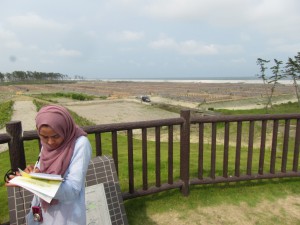

At the end of the program, the journalists made the following comments:
●Speaking with people from different sectors, including not only government officials, but also NPO workers, fishermen, university professors, students, teachers and businessmen made balanced coverage possible.
●There was a disaster recently in my home country, so I believe people there will be able to use the advice of the people of Tohoku.
●I would like to see more programs like this.
We can only hope that the coverage by these participants will help contribute to disaster prevention and mitigation in their home countries.
A Japanese Newspaper Reported on the Program!
Iwate Nippo, Sanriku Shimpo and Kahoku Shimpo covered the program.
See article from Kahoku Shimpo here (in Japanese)
Journalists Invited
[The Philippines] Mr. Dewey Joseph Gida Yap
Philippine Daily Inquirer, Reporter
*Philippine Daily Inquirer: The Philippines largest English-language daily, with over 500,000 readers a day.
*Personality: He knew a surprising amount of facts about Japan.
[Thailand] Mr. Thasong Asvasena
The Nation, Senior Rewriter/Front page Editor
*The Nation: Founded in 1971. With a daily circulation of around 50,000, it is the second largest English-language paper in Thailand.
*Personality: As the oldest of the four participants, he gave the others life advice.
[Malaysia] Ms. Azzah Mohamad @ Md Som
Bernama, International Desk Reporter
*Bernama: In the multi-ethnic country of Malaysia, this state-run news agency releases news in Malay, English, Chinese, Spanish and Arabic.
*Personality: She looks friendly, but her questions cut to the heart of the matter.
[Indonesia] Mr. Bayu Prasetyo
Antara, Domestic News Reporter
*Antara: The largest news agency in Indonesia, releasing news to approximately 500 outlets domestically, from major newspapers to local TV stations.
*Personality: He loves singing and sweets. He enjoyed his free time thoroughly, but was very serious when reporting.
Articles have already been published!
We have already been informed by the participants about some articles. Look forward to seeing them in a separate report!

